Juanita McNeely
Works on Paper
June 11—July 18, 2025
James Fuentes is pleased to announce Juanita McNeely: Works on Paper. Drawn from an immense archive, this exhibition brings into perspective a key facet of the artist’s oeuvre, spanning works in diverse mediums on paper from the 1960s through to the 2010s.
For McNeely, the act of drawing was inseparable from the powerful instinct and imagination that drove her practice. Using combinations of watercolor, pastel, charcoal, and pencil, sometimes experimenting on found and photocopied materials, working on paper offered a wide-open testing ground for her observations of the human body and its thresholds. Animals also appear frequently, occupying the works like fragments of dream or feverish hallucination, tethered to sensation. Oftentimes originating the compositions for her larger paintings on canvas, there is a direct line from McNeely’s suggestive marks on paper to the way she would handle paint. Extending the oil paint with turpentine to keep the surface thin and responsive, she was sensitive to what she called the “heavy feeling” of too much paint. At times, with a controlled drop of the solvent she might also tap away unwanted areas with a paper towel. This was a trick learned from printmaking, which holds an important place within her work on paper, and was an early influence to her output on the whole.
At Westbeth—the New York artist housing that she lived in from the 1970s until her passing in 2023—McNeely was active in a group of artists who rehabilitated the building’s basement print studio. This was no small effort, and printmaking became part of her daily routine for some time, offering McNeely a material extension of her painting practice as well as a rhythmic counterpoint to it. McNeely drew and painted in the light-filled hours in her studio overlooking the Hudson River, then descended in the later afternoon to the basement studio to immerse herself in print. Monoprints, in particular, drew her in with their immediacy and mutability—so close to painting, yet beholden to the resistance of the plate and the unpredictability of the press. In many ways, McNeely would draw and paint simultaneously—moving back and forth from the surface, applying and removing areas—her whole body involved in working spontaneously to capture movement and vitality. In both, she always remained attuned to the periphery; to what transforms when one shifts position or proximity, as she continually did.
McNeely embraced this paradox of scale, translating monumental figuration into clusters of rapid, handheld notations, then returning to them through a reducing lens (a device opposite to a magnifying glass that literally extended her vision and offered new perspectives). Over time, as McNeely’s mobility changed, the act of drawing offered both continuity and an expanded control of her media. From the very beginning of her career as an artist—and even before—McNeely’s works on paper sowed the first ideas of her accomplishments in painting which would leave an indelible imprint on the lineage of feminist figuration. The paper works, small and insistent, became ever more central toward the end of her life as well. McNeely’s experimentation was unrelenting. Reflecting her deepening attention to an idea’s evolution through touch, pressure, and time, these works show us as much.
Juanita McNeely (1936-2023) was born in St. Louis, Missouri, and lived and worked in New York City. She graduated with an MFA from Southern Illinois University and a BFA from the St. Louis School of Fine Arts at Washington University. Throughout a six-decade career, she remained committed to conveying the extreme physicality and movement of the human figure, informed by her close observation of others as well as her personal experiences of sexism, illness, abortion, and disability. Brazenly defying the conventions of art history, her work approaches the human form as a powerful source of movement, animality, emotion, and rupture. McNeely was a member of the Fight Censorship group founded in 1973 by Anita Steckel, alongside peers including Judith Bernstein, Louise Bourgeois, Martha Edelheit, Joan Semmel, Hannah Wilke, and Eunice Golden; as well as Women Artists in Revolution (W.A.R.), Redstockings, and other artist activist groups. Today, her work is held in the permanent collections of the the Whitney Museum of American Art, New York; Minneapolis Institute of Art; Rubell Museums, Miami and Washington DC; Palacio de las Bellas Artes, Mexico City; National Museum of History & Art, Taipei; and university special collections including the Women’s Studies Research Center at Brandeis University, the Oakleigh Collection at Skidmore College, the Morris Library at Southern Illinois University, and the William and Uyendale Scott Memorial Women Artists Study Collection at Bryn Mawr College. Most recently, her large-scale works have been presented in exhibitions including For Dear Life: Art, Medicine, and Disability at the Museum of Contemporary Art in San Diego (2024-2025); Is It Real? Yes, It Is! (1969); The Whitney’s Collection: Selections from 1900 to 1965 at the Whitney Museum of American Art (2019-2025); and at the Rubell Museums in Miami (ongoing) and Washington DC (2022-2023).
James Fuentes Press Volume 5: Juanita McNeely was published in 2022. Now out of print, it can be accessed in full at jamesfuentes.com/publications.
Artist(s)
Juanita McNeelyArtist CV
Download PDF (23.8 MB)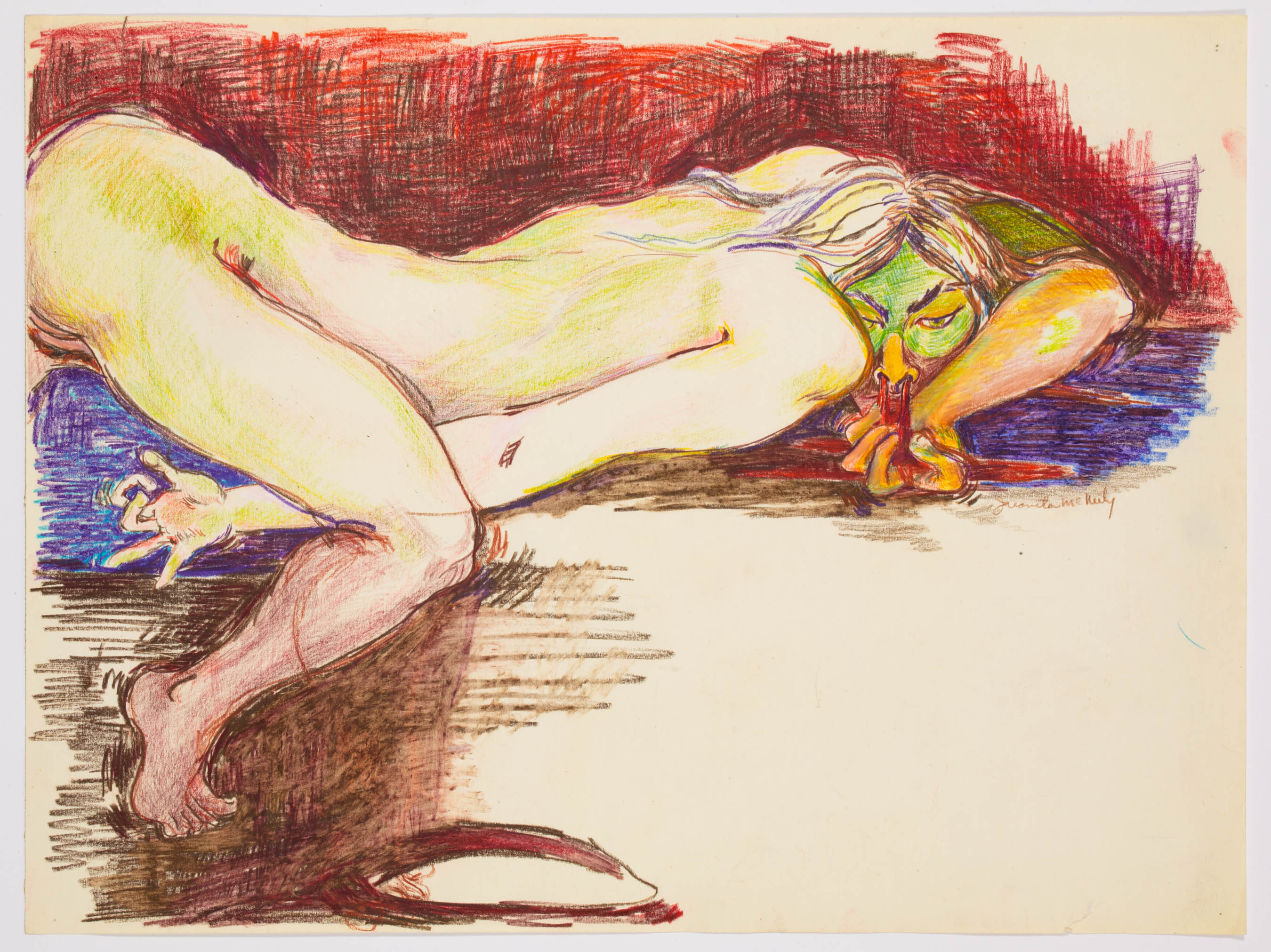
Study for 'Woman Beyond Pain', 1973
Colored pencil and pastel on paper
18 x 24 inches

Untitled, 1980's
Watercolor on paper
21 3/4 x 15 inches
(JM/P 11213)

Study for 'Woman Beyond Pain', 1973
Colored pencil and pastel on paper
18 x 24 inches
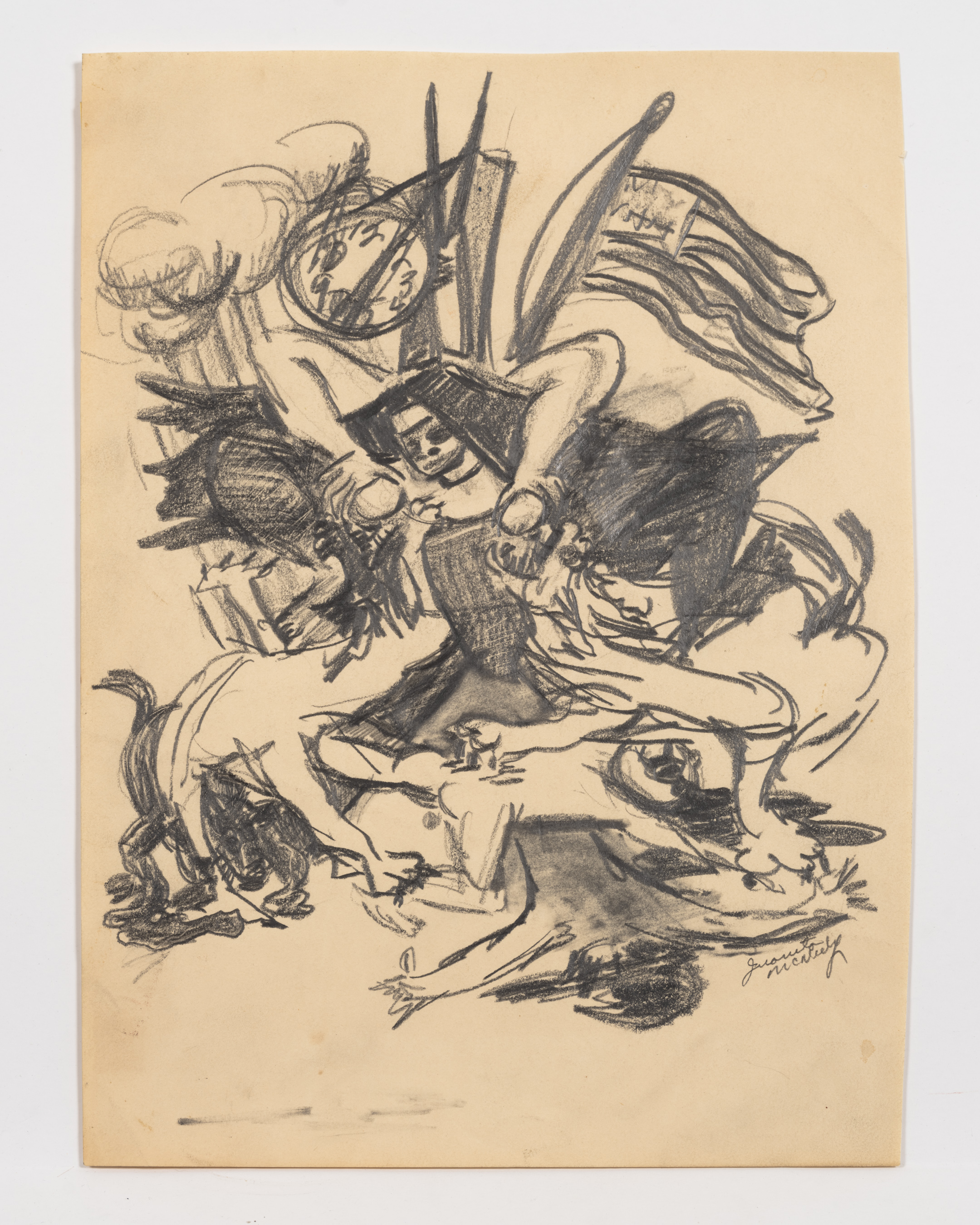
Untitled, C. 1960s
Graphite on paper
11 1/2 x 8 3/4 inches
(JM/P 11786)
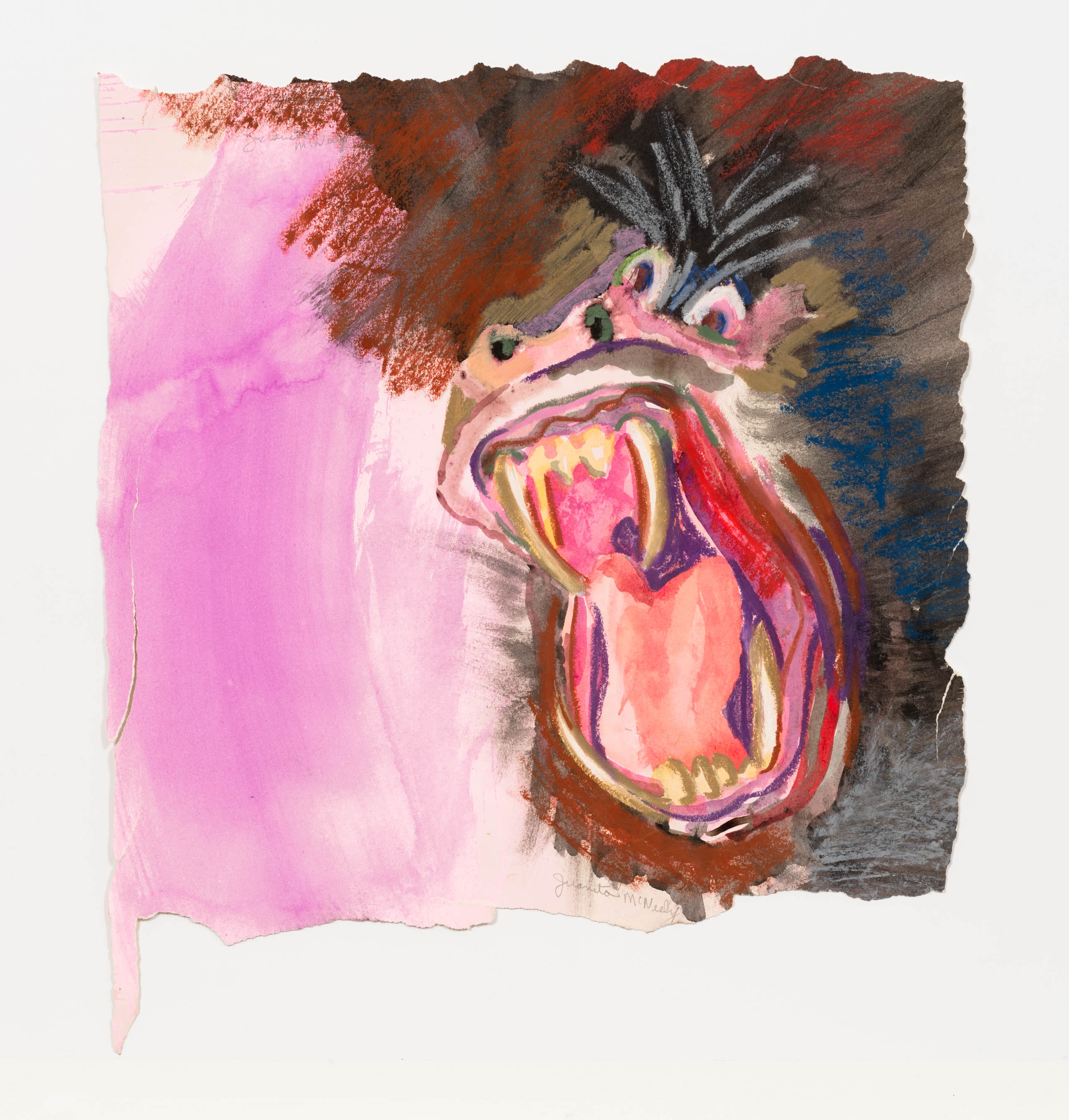
Untitled, c. 1986
Watercolor and pastel on paper
18 1/2 x 16 inches
(JM/P 11366)
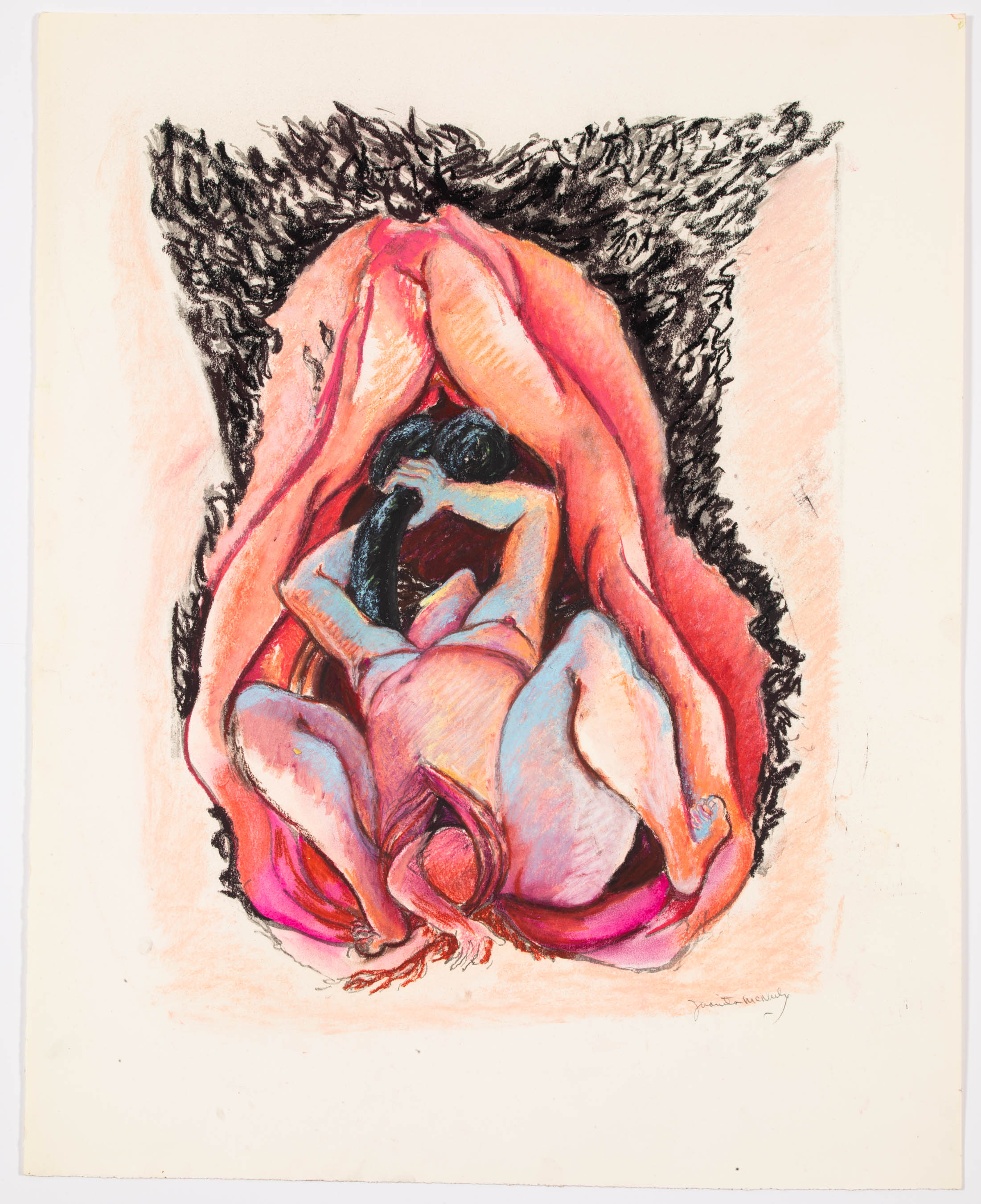
Birth, 1970
Lithograph on paper, pastel
26 1/4 x 21 inches
(JM/P 11136)
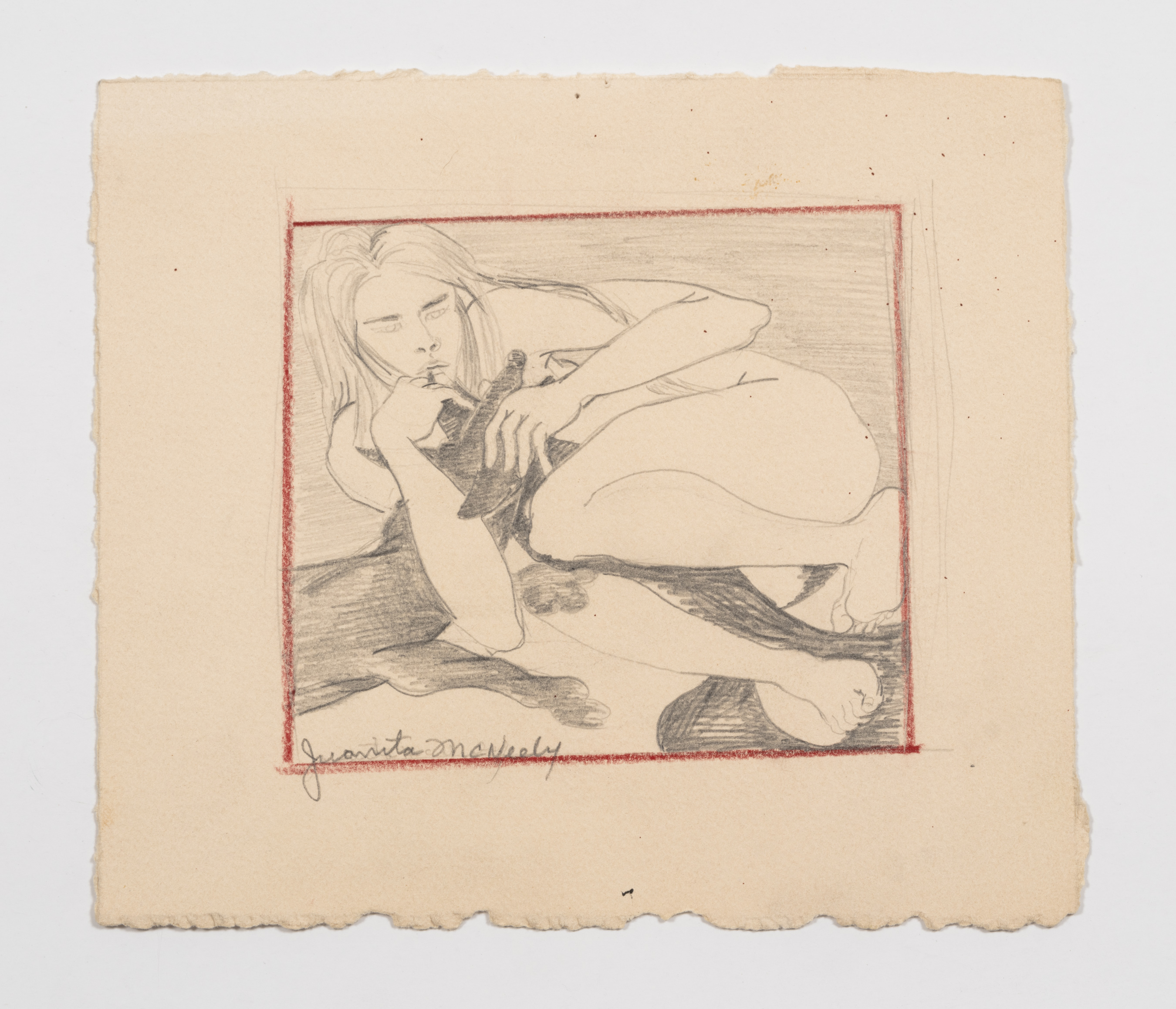
Study for 'Woman and Dog', 2011
Graphite and colored pencil on paper
7 1/4 x 7 3/4 inches
(JM/P 11626)
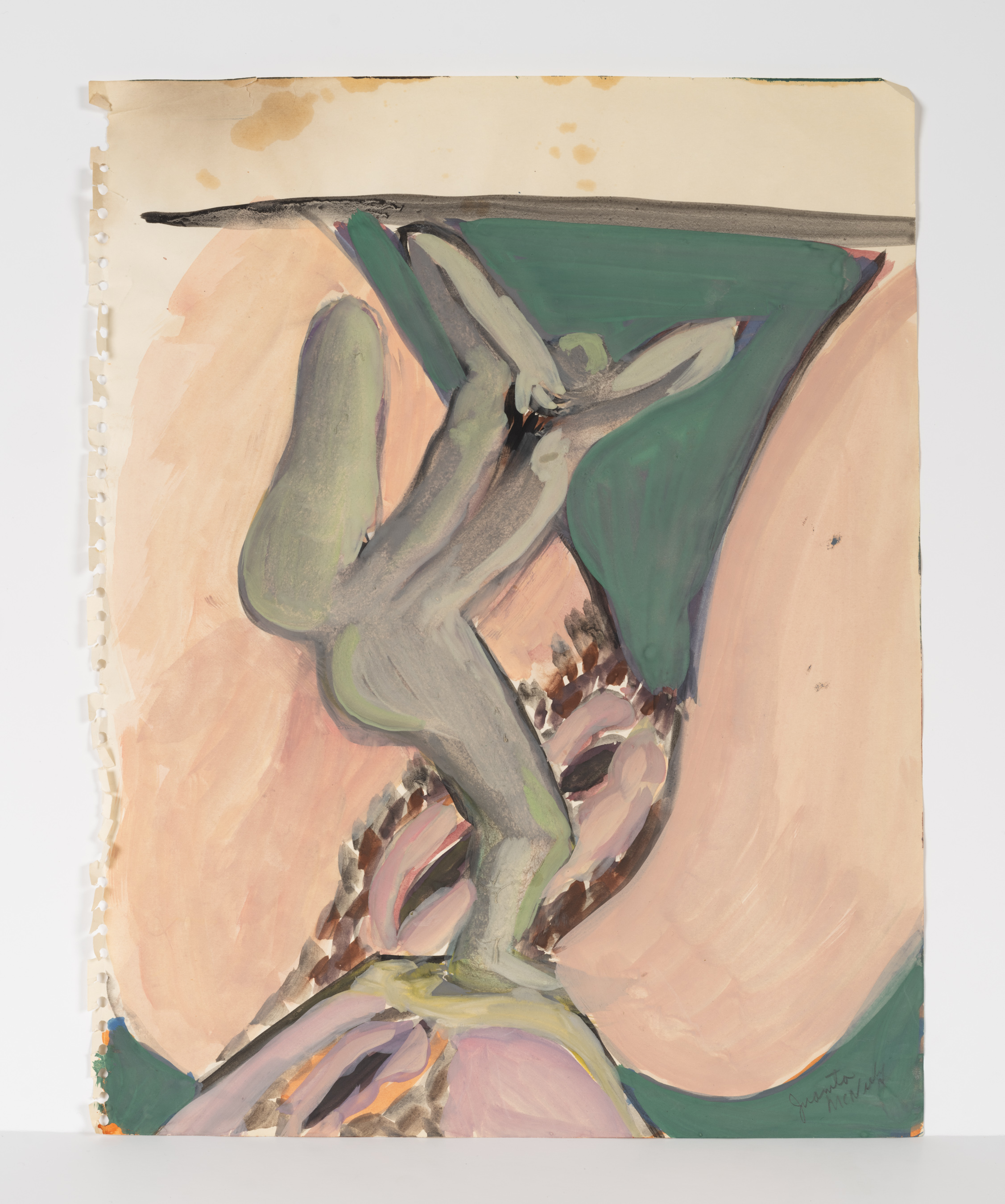
Study for 'On the Edge", Early 1970s
Watercolor on paper
14 x 10 3/4 inches
(JM/P 11512)

Untitled, c. late 1960s
Lithograph on paper, pastel
20 x 26 inches
(JM/P 11115)
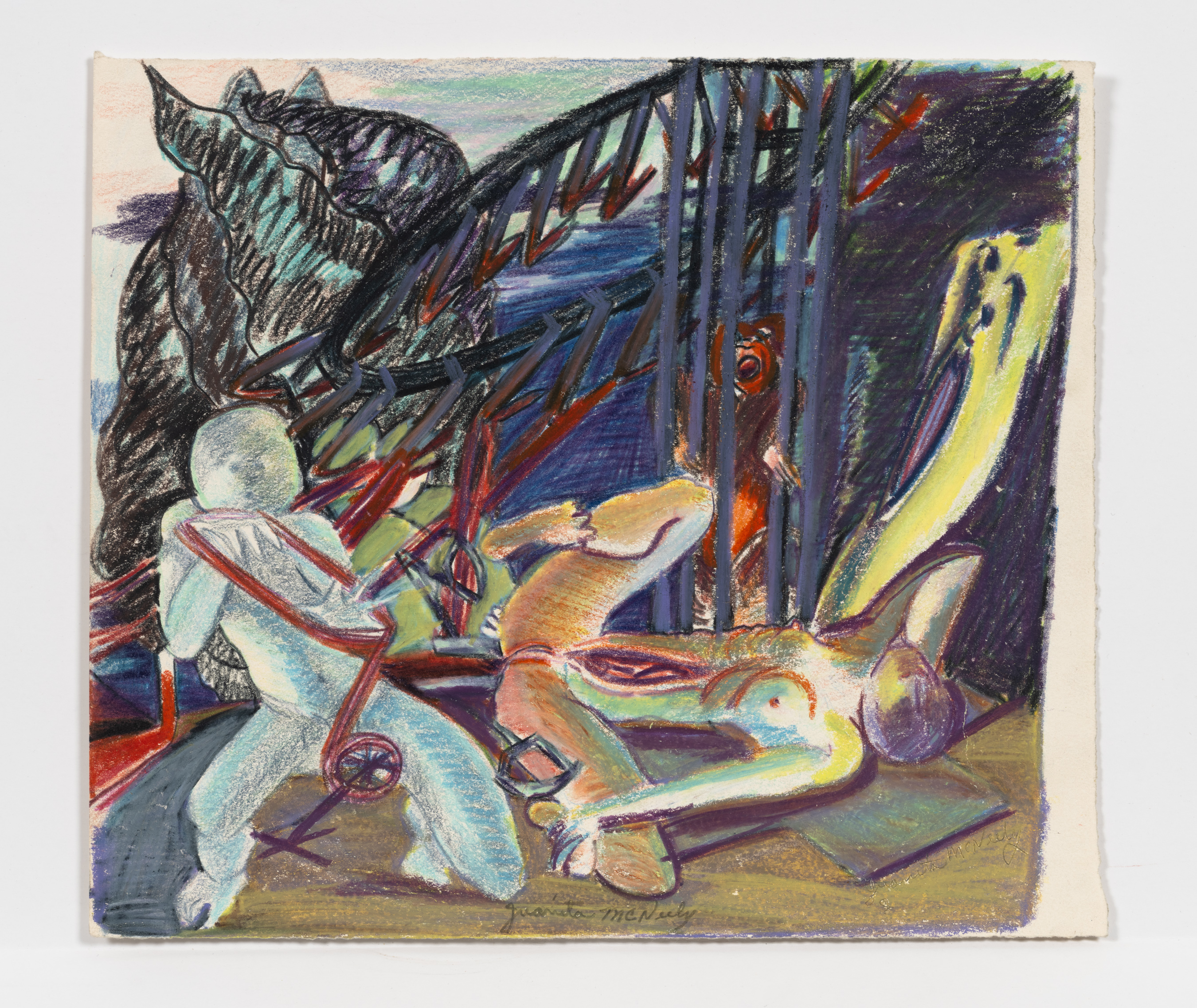
Study for 'Pre Abortion Law Remembrance', 1985
Pastel on paper
9 1/8 x 10 3/8 inches
(JM/P 11598)

Study for 'Holding Back', 2000
Colored pencil on photocopy, three papers taped together
11 1/4 x 13 3/8 inches
(JM/P 11731)

Study for 'Looking Through Glass", 2000s
Colored pencil and pastel on paper
11 x 7 1/2 inches
(JM/P 11618)

Untitled, c. 1990s
Pastel on paper
61 1/2 x 52 1/2 inches
(JM/P 11347)
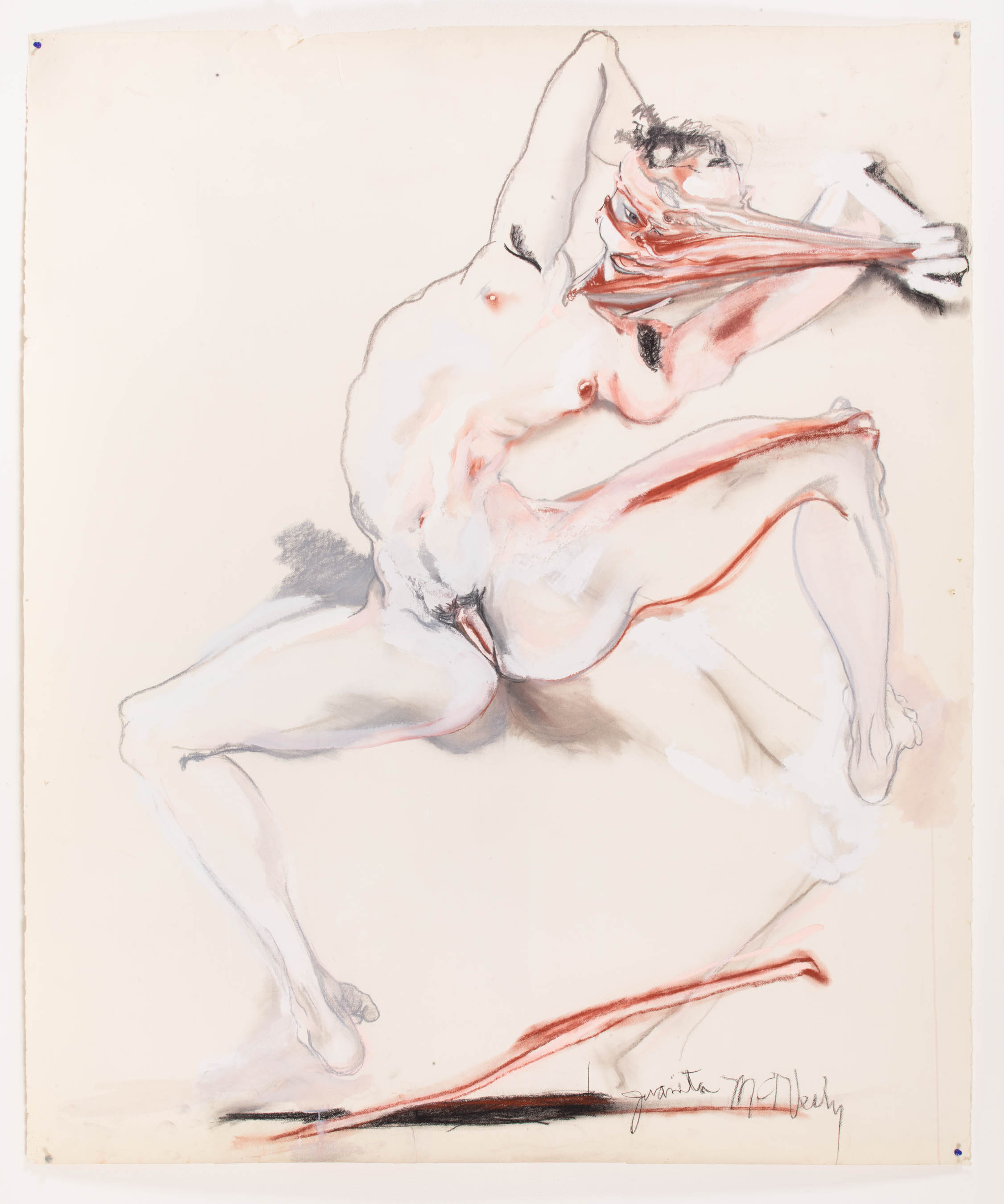
Untitled, c. 1990s
Pastel on paper
63 1/2 x 52 1/2 inches
(JM/P 11348)

Study for 'Tagged', 2010
Pastel on paper
8 1/2 x 8 inches
(JM/P 11615)
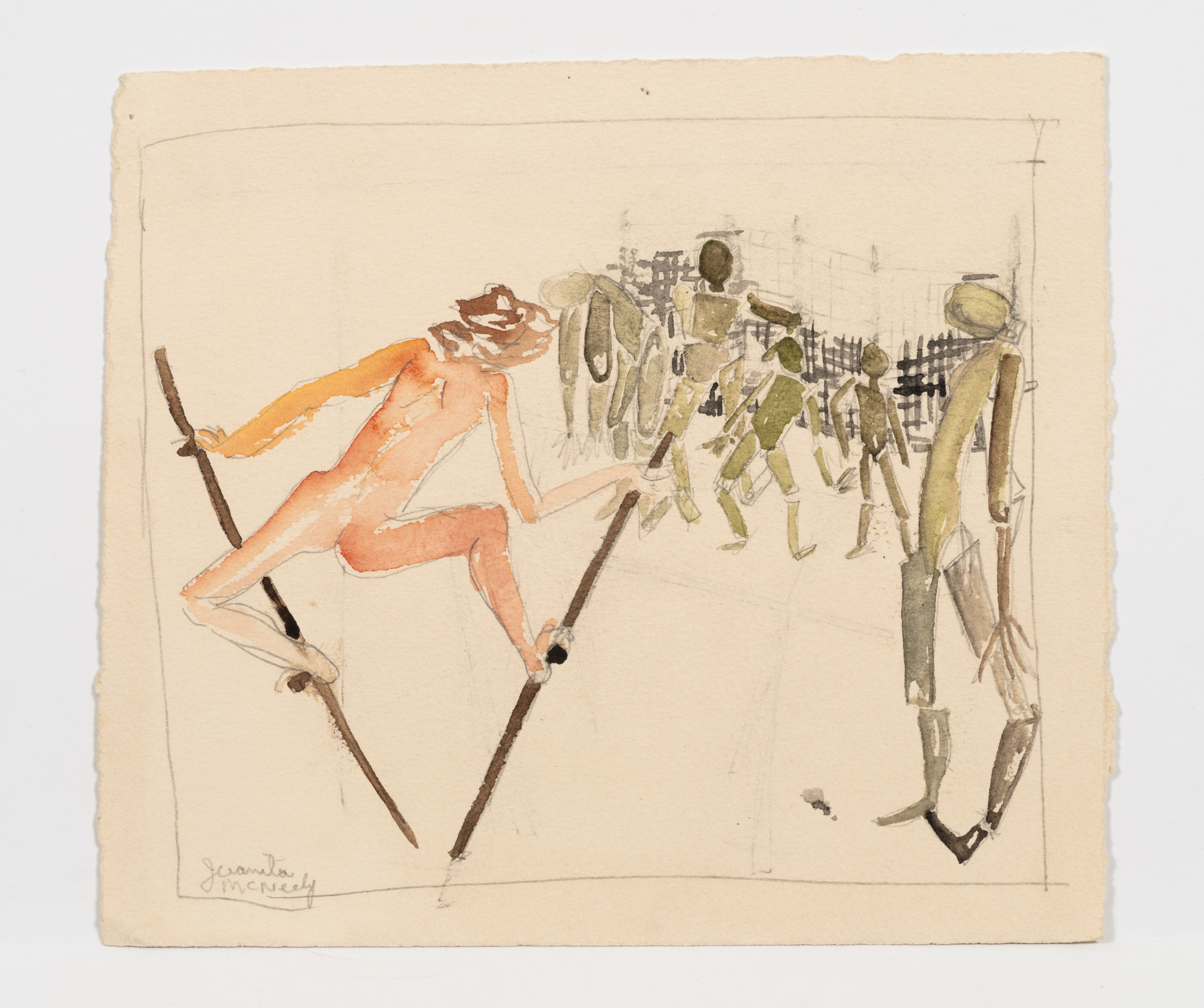
Study for 'Walking', c. 1990s
Watercolor on paper
7 1/2 x 8 1/2 inches
(JM/P 11752)

Untitled, 1963
Charcoal on paper
30 3/4 x 23 inches
(JM/P 11175)
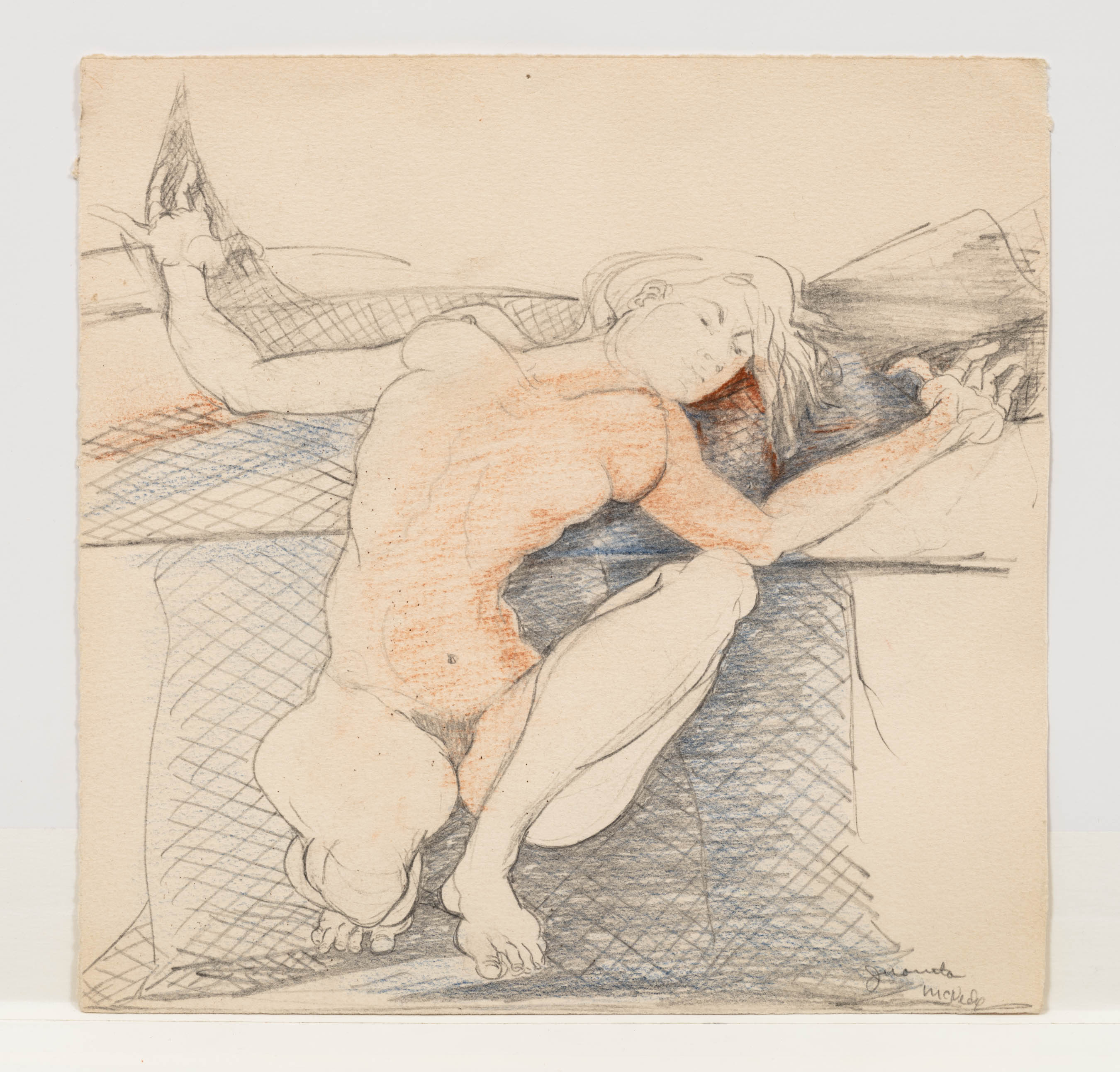
Untitled
Colored pencil on paper
9 x 9 inches
(JM/P 11491)
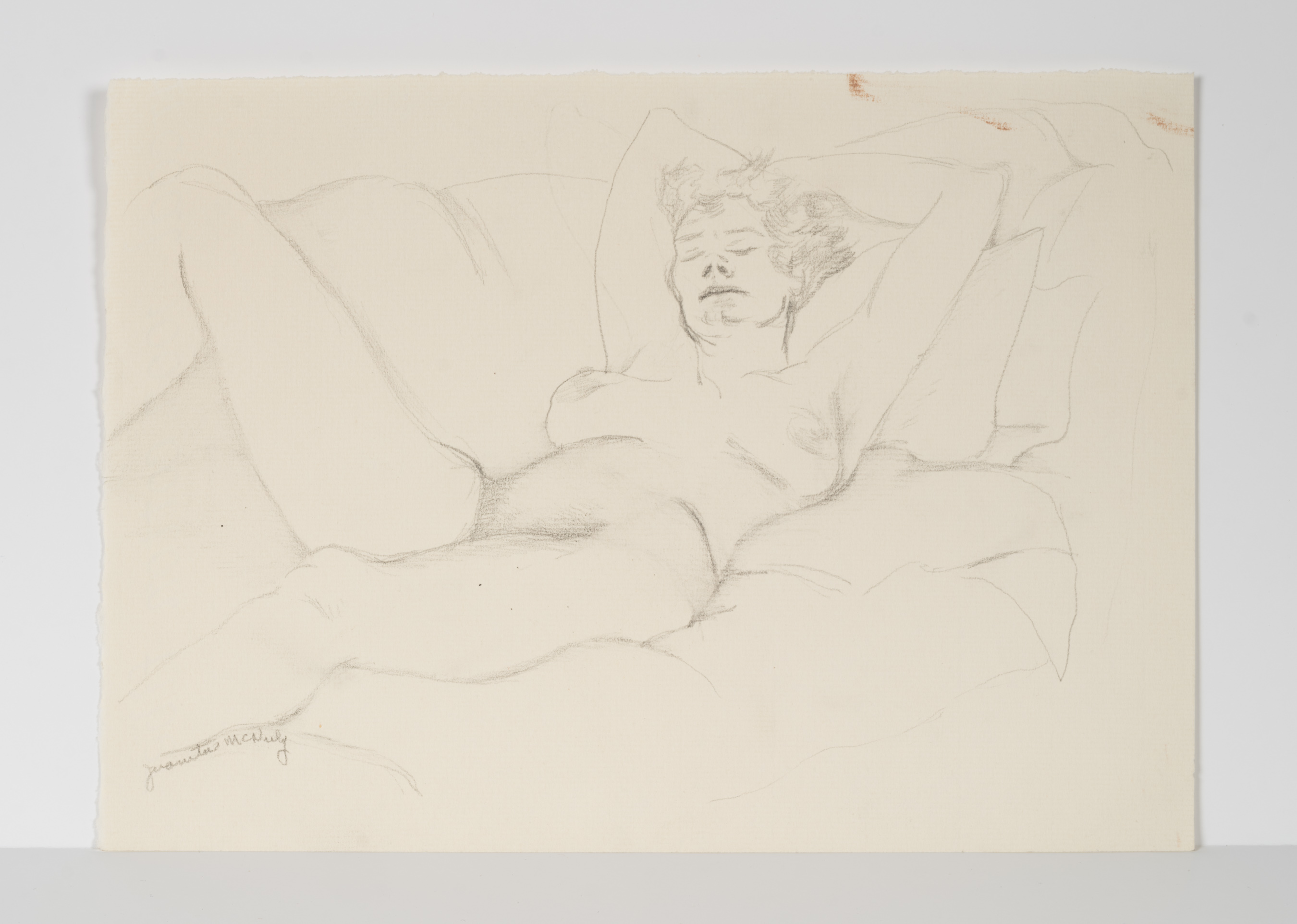
Untitled
Graphite on paper
7 7/8 x 11 inches
(JM/P 11521)
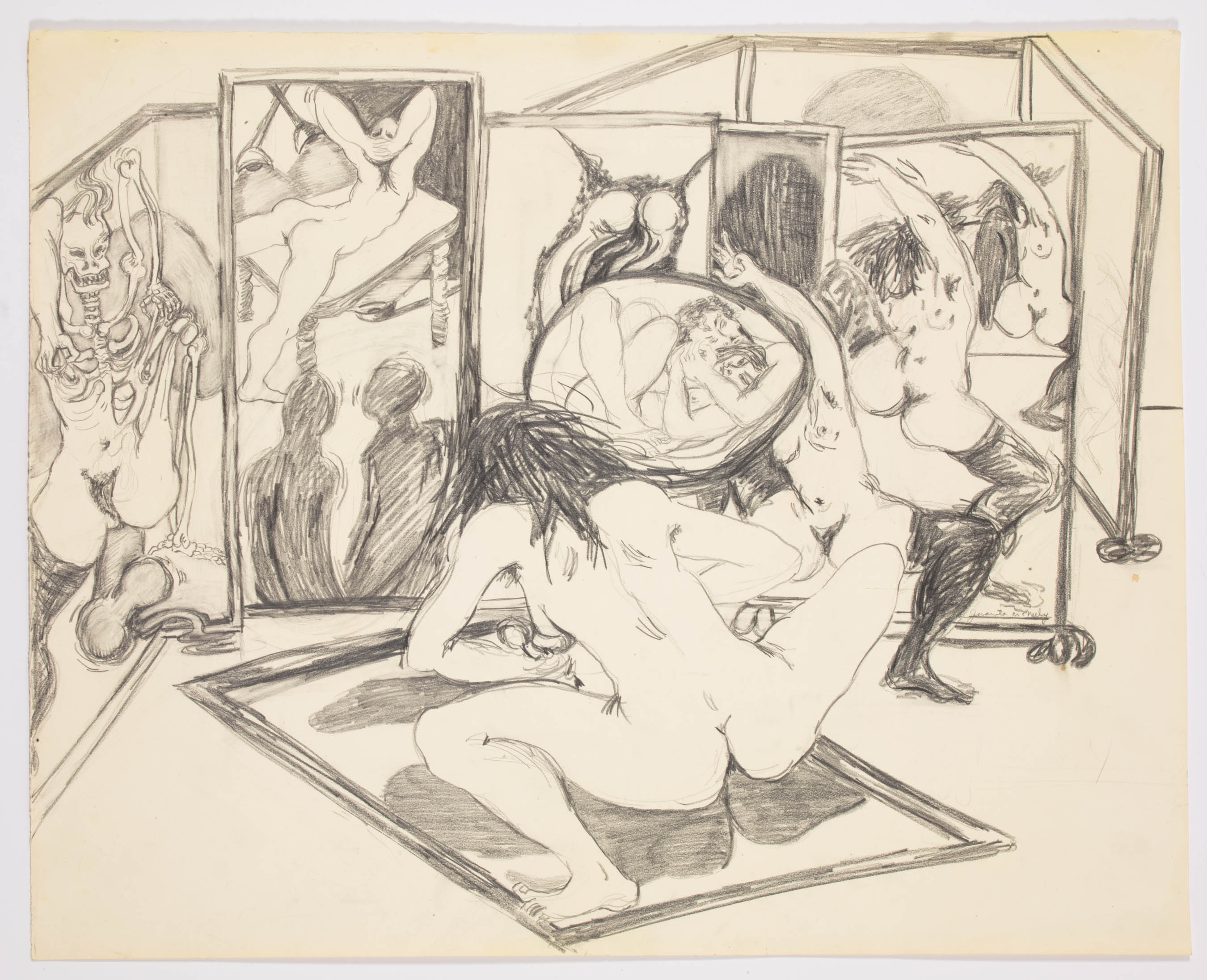
Untitled, early 1970s
Graphite on paper
20 3/4 x 26 1/4 inches
(JM/P 11030)
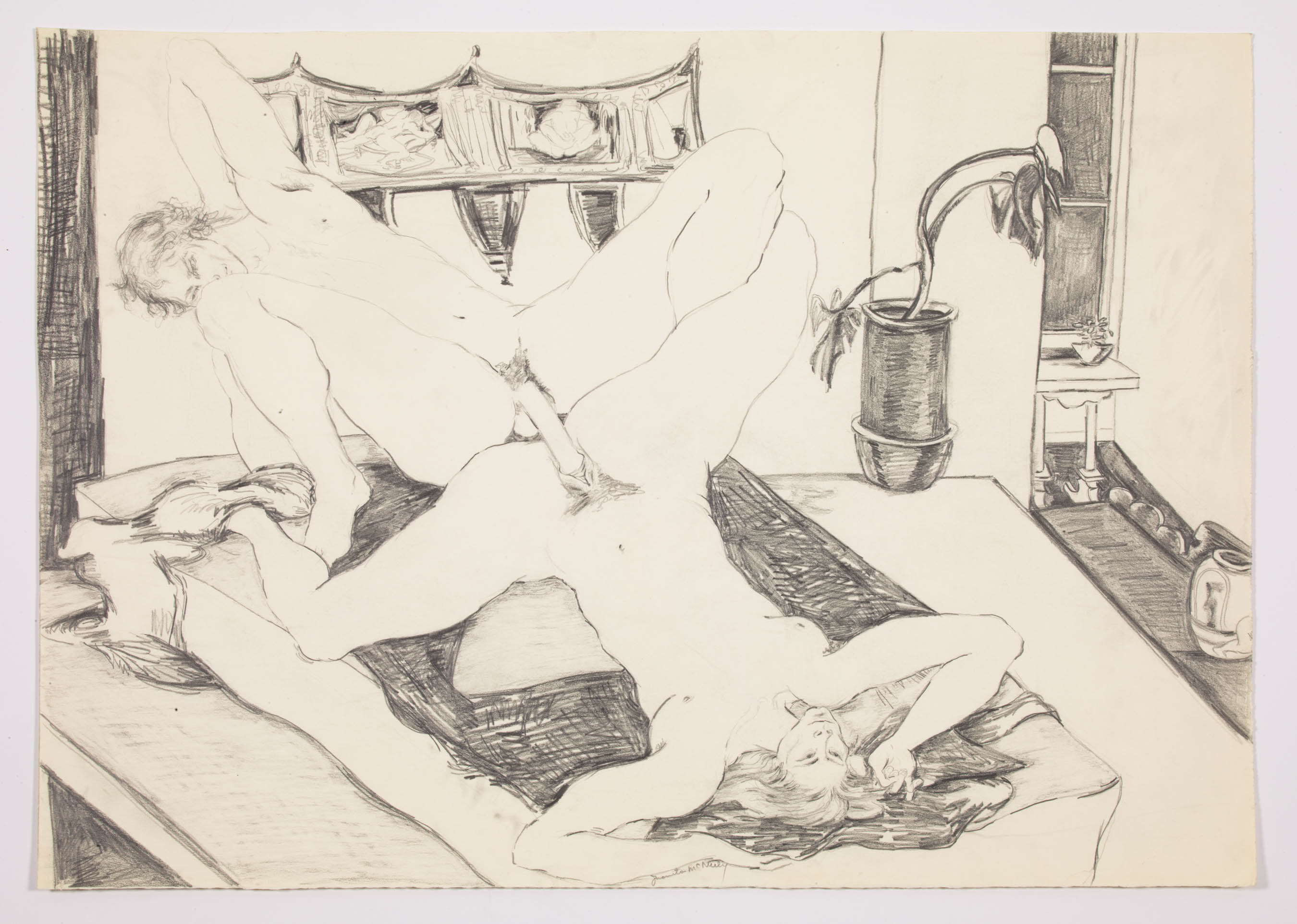
Untitled, Late 1960s-early 1970s
Graphite on paper
18 1/4 x 25 1/4 inches
(JM/P 11094)

Untitled, Late 1960s-early 1970s
Graphite on paper
16 1/4 x 21 inches
(JM/P 11127)

Umbrella + Cap, n.d.
Unique lithograph, pastel on paper
20 x 26 inches
(JM/P 11087)
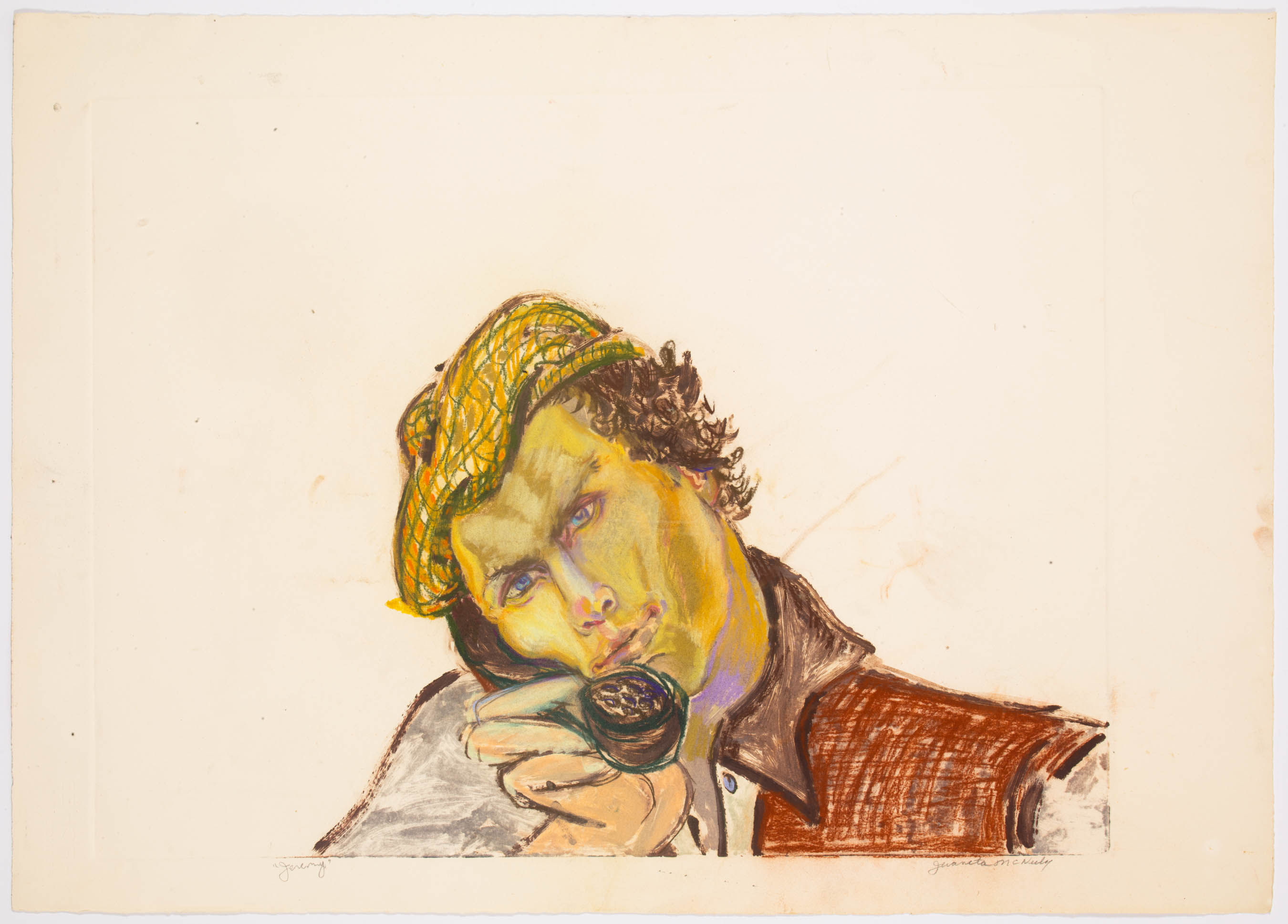
Jeremy, c. mid 1970s
Monoprint with pastel on paper
artwork 21 x 29 1/2 inches
(JM/P 11048)
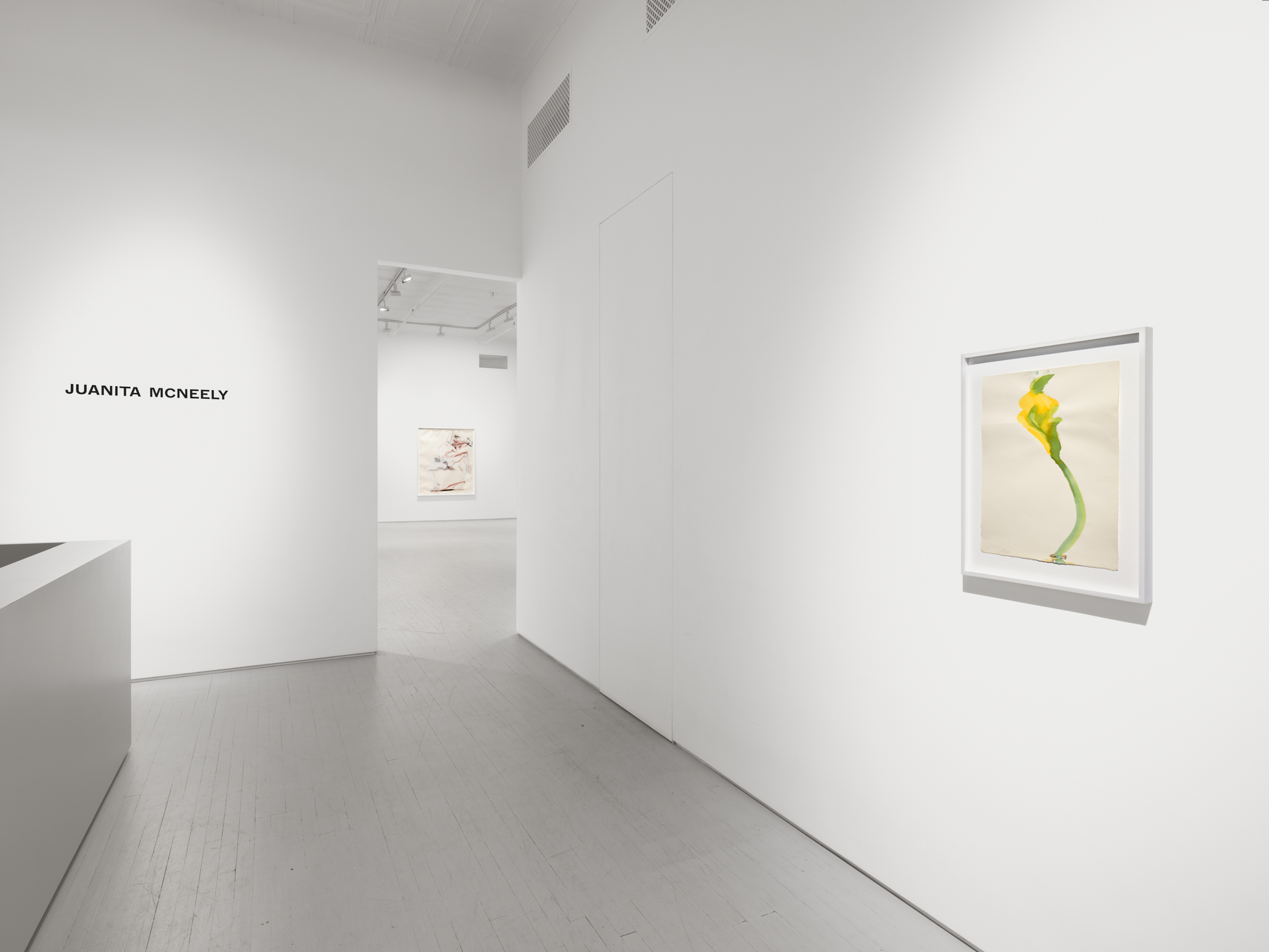
Installation view, Juanita McNeely: Works on Paper, James Fuentes, New York, 2025
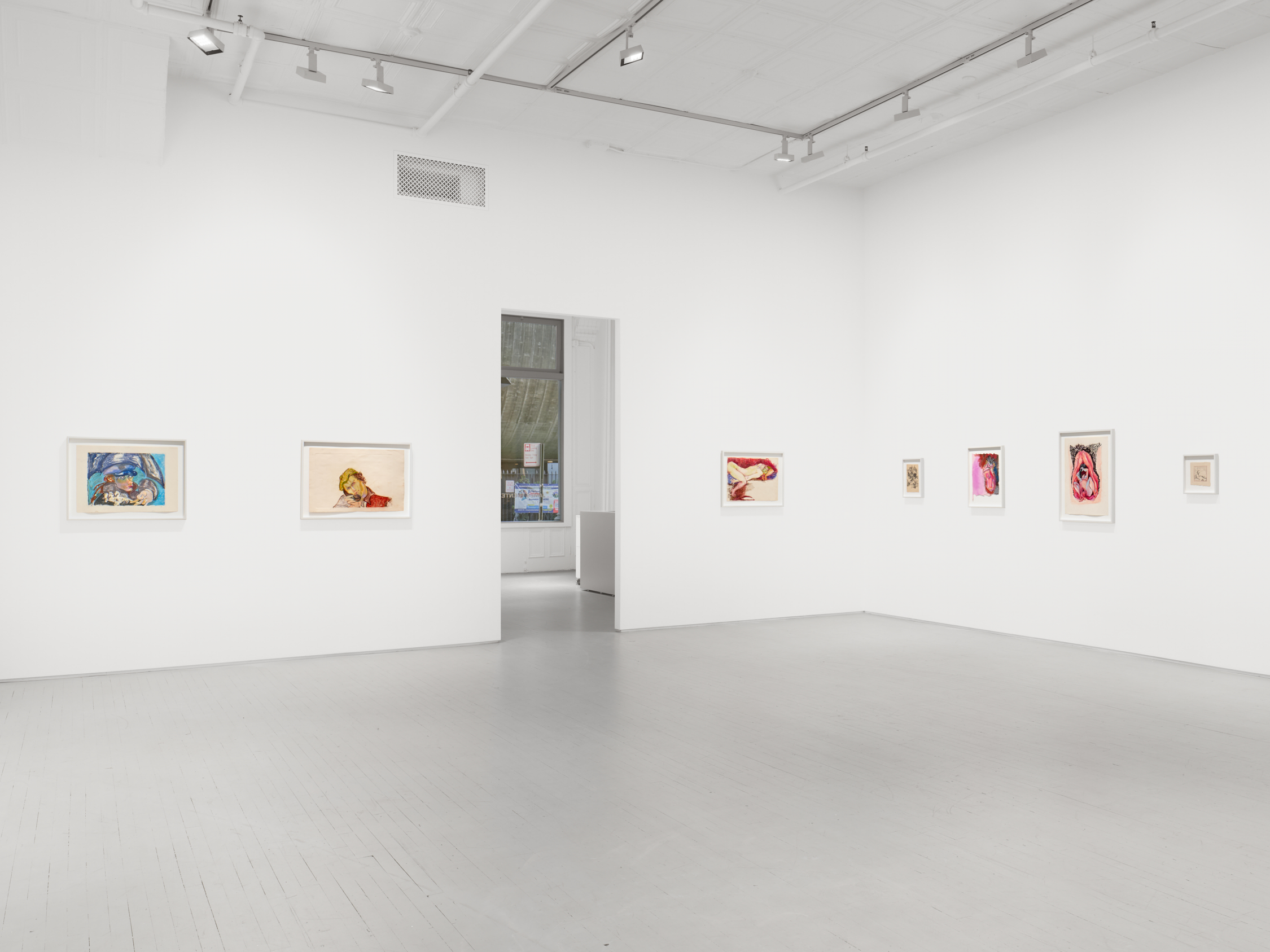
Installation view, Juanita McNeely: Works on Paper, James Fuentes, New York, 2025

Installation view, Juanita McNeely: Works on Paper, James Fuentes, New York, 2025
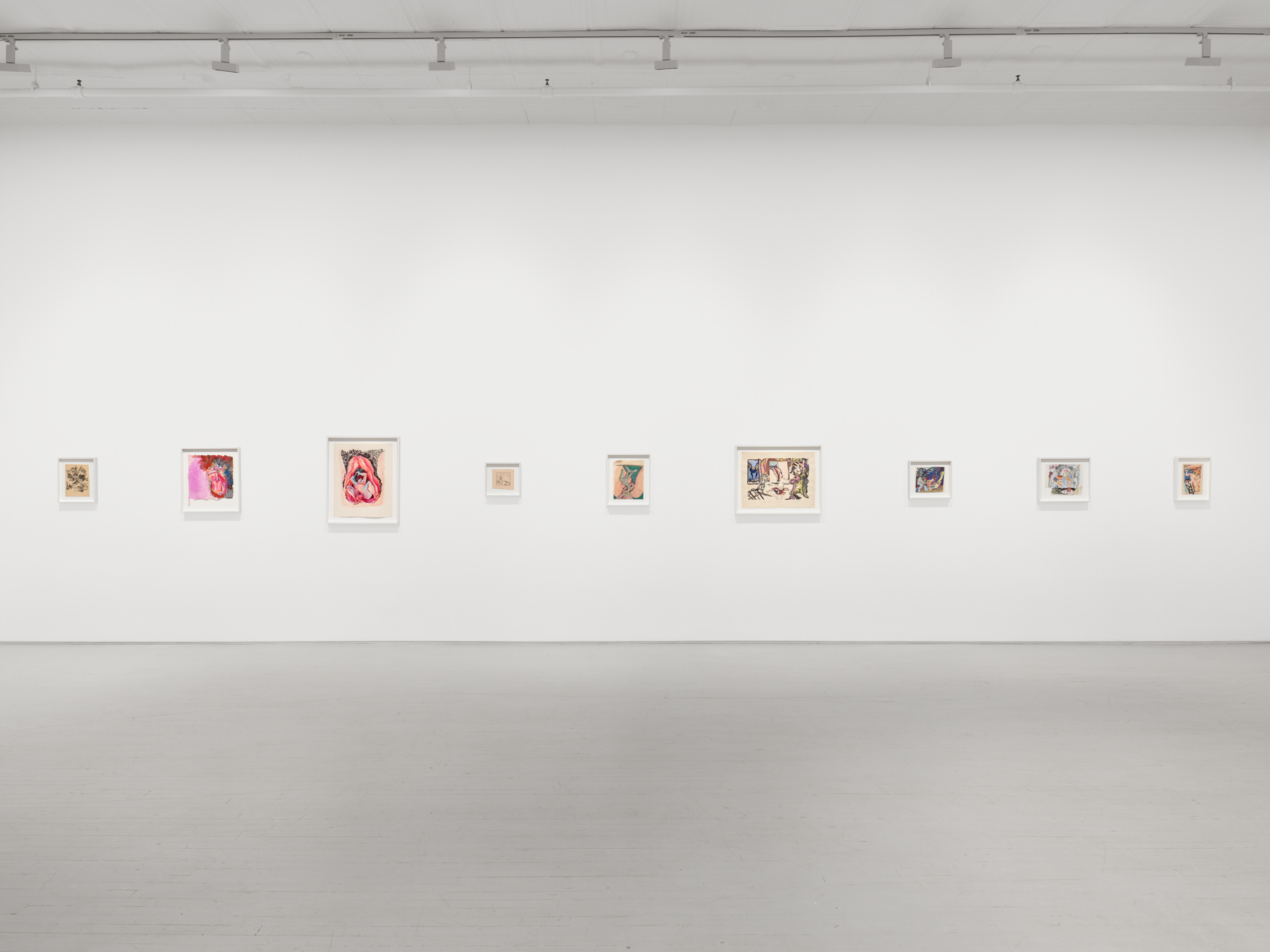
Installation view, Juanita McNeely: Works on Paper, James Fuentes, New York, 2025

Installation view, Juanita McNeely: Works on Paper, James Fuentes, New York, 2025
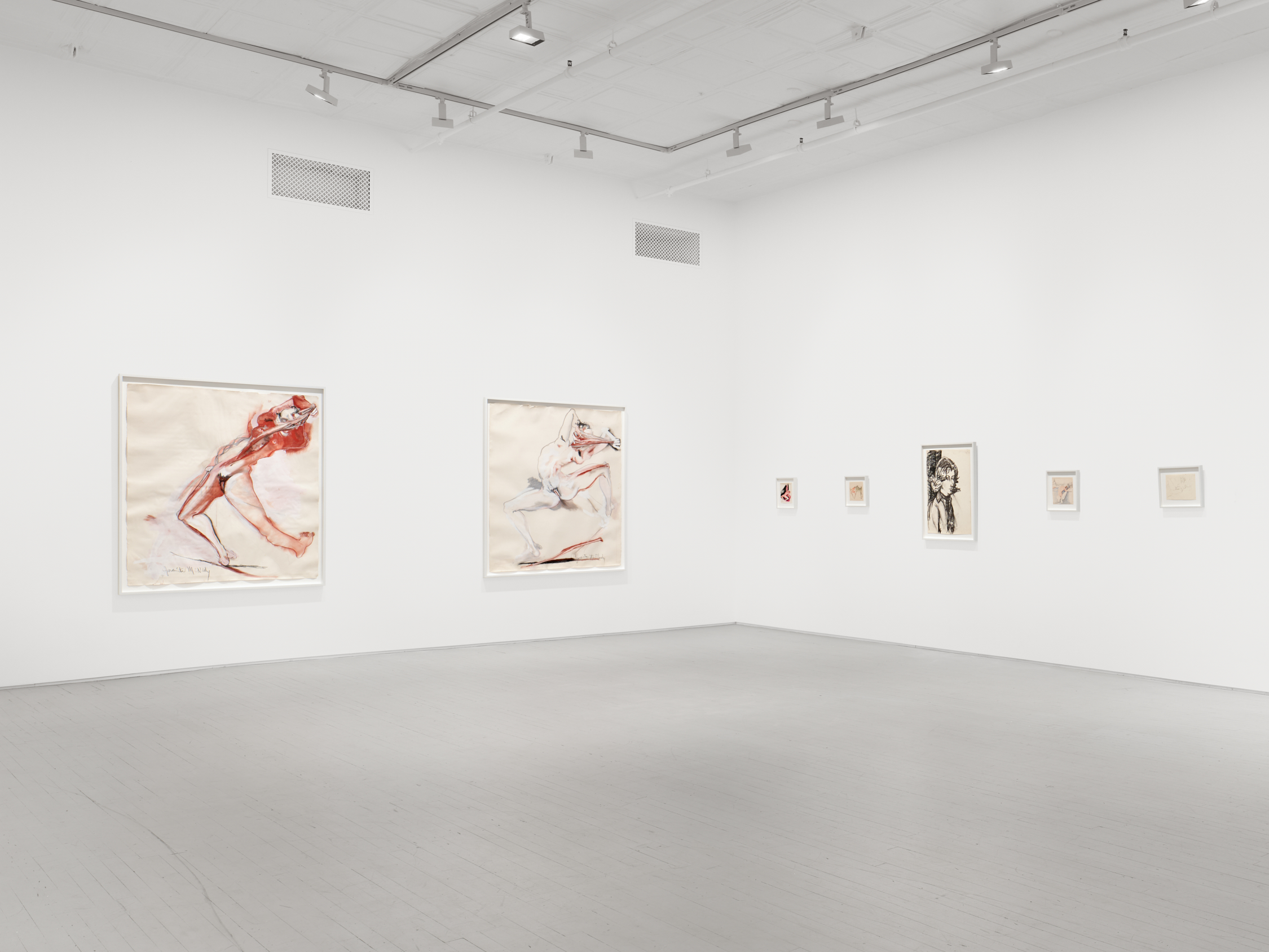
Installation view, Juanita McNeely: Works on Paper, James Fuentes, New York, 2025
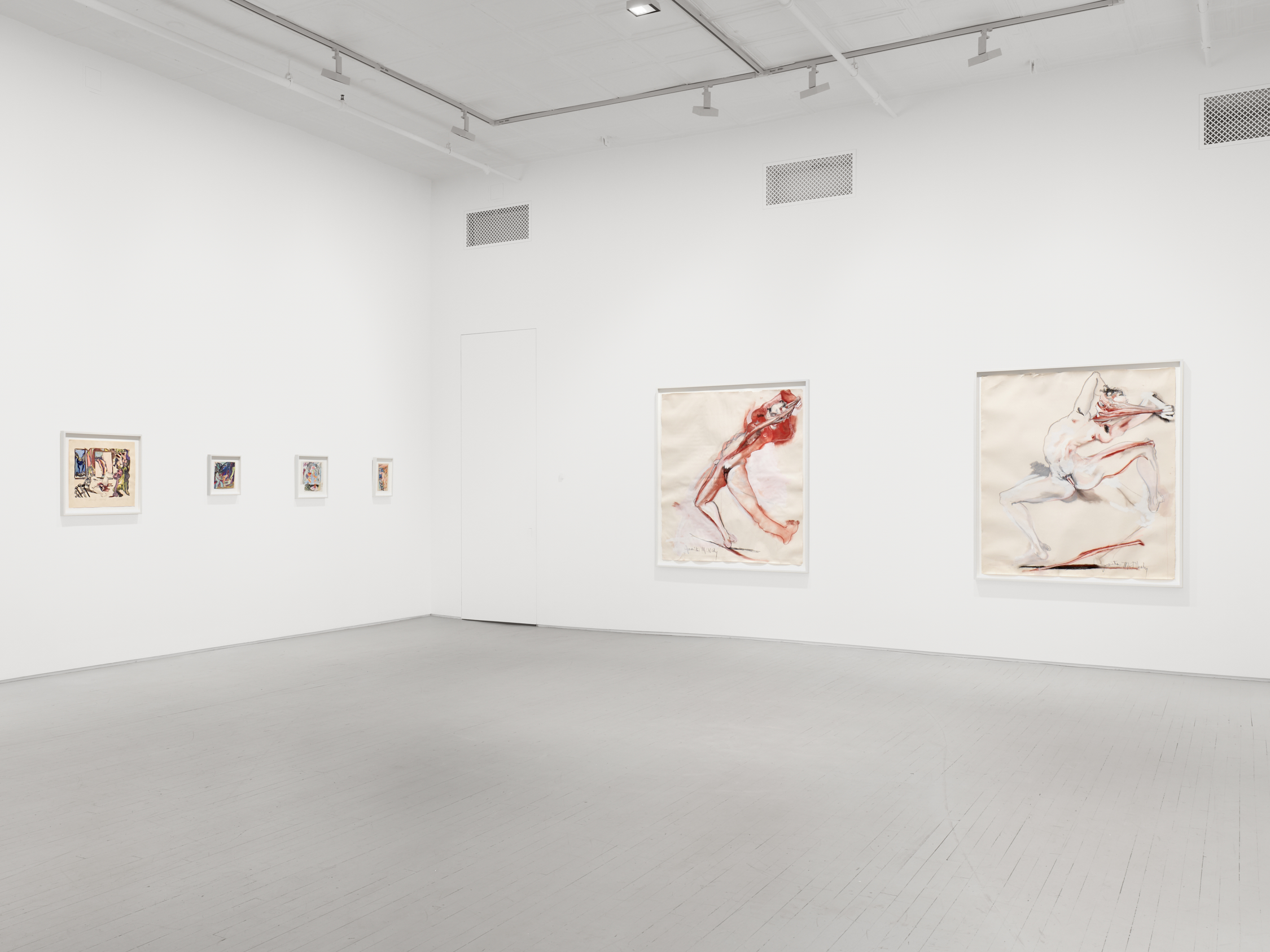
Installation view, Juanita McNeely: Works on Paper, James Fuentes, New York, 2025

Installation view, Juanita McNeely: Works on Paper, James Fuentes, New York, 2025

Installation view, Juanita McNeely: Works on Paper, James Fuentes, New York, 2025
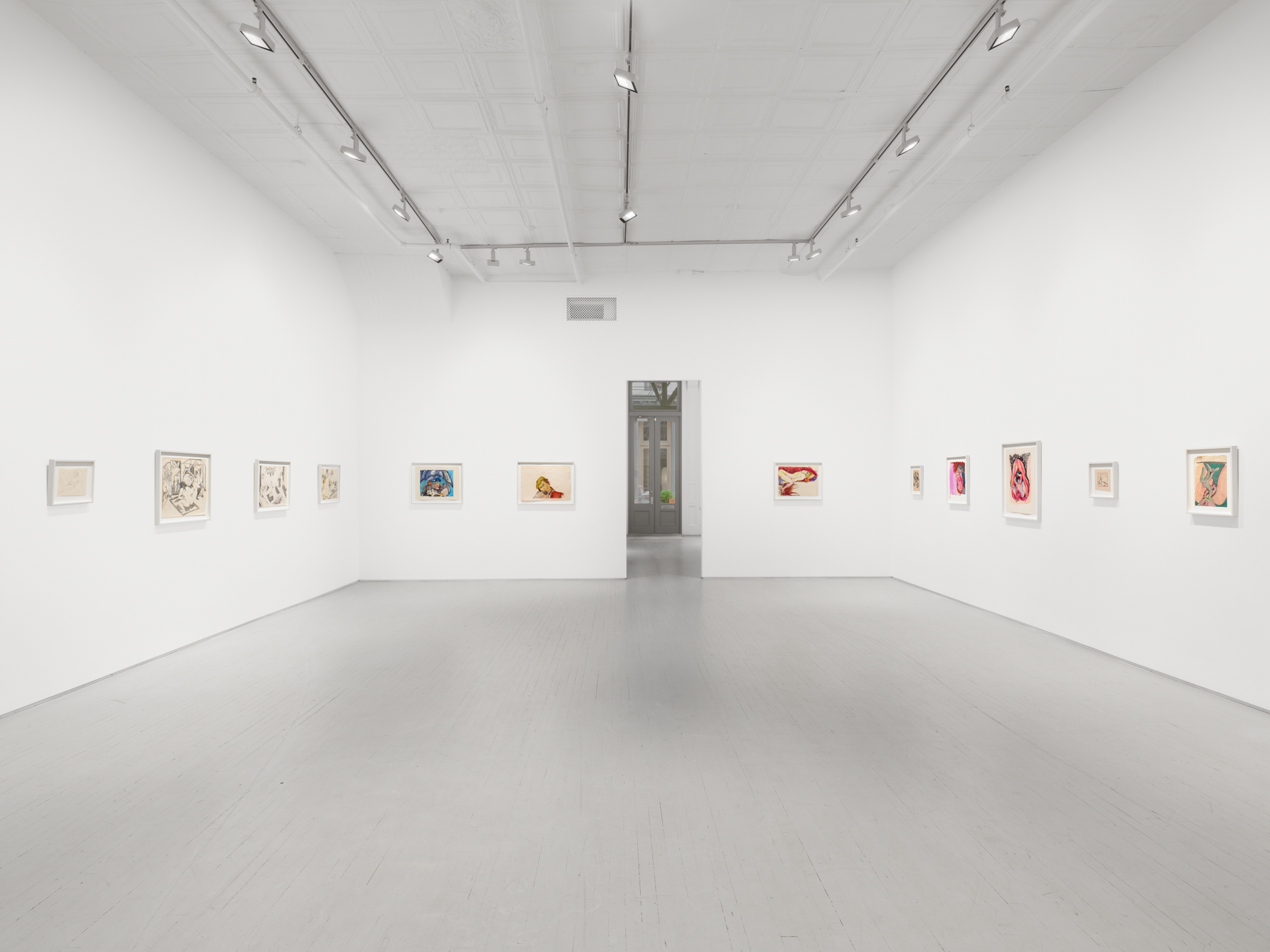
Installation view, Juanita McNeely: Works on Paper, James Fuentes, New York, 2025

Installation view, Juanita McNeely: Works on Paper, James Fuentes, New York, 2025